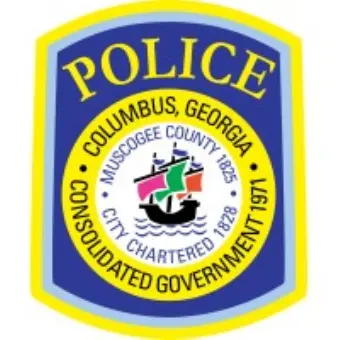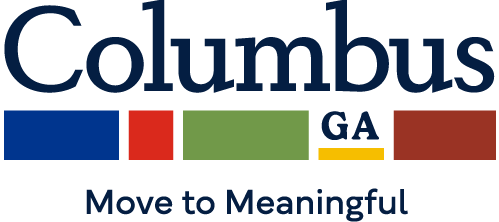Urban Forestry & Beautification Manager - G129

Columbus Consolidated Government
This job is no longer accepting applications
See open jobs at Columbus Consolidated Government.See open jobs similar to "Urban Forestry & Beautification Manager - G129" Columbus 2025.Major Duties and Responsibilities
-
This position supervises the administrative functions of the Urban Forestry & Beautification Division.
- Interviews, hires, trains, supervises, evaluates, rewards, and disciplines personnel; plans, assigns, directs work; addresses complaints and resolves problems.
- Administers the functions of the Urban Forestry & Beautification Program; develops and maintains the computer-based master tree program; develops and maintains the tree planting program according to the master tree plan; coordinates community based tree programs.
- Diagnoses tree conditions; makes assessments for possible public safety hazards; investigates incidents as needed.
- Plans, allocates, and monitors time, people, equipment, and other resources to ensure efficient organization and completion of work; works on call 24 hours a day, 7 days a week.
- Receives, analyzes, and organizes work requests; determines which crews will be assigned to various types of work.
- Monitors productivity and workflow; resolves problems to ensure that deadlines are met.
- Confers with upper management to keep them informed on key issues and progress toward objectives and to gain their support and approval; makes recommendations to assist management in making needed improvements.
- Collaborates, persuades and negotiates with others outside the work area to coordinate efforts and maintain cooperative and efficient relations.
- Develops new methods through planning and organization.
- Manages the purchasing and inventory control of parts, equipment, and supplies for the unit.
- Performs other duties as assigned.
Knowledge, Skills and Abilities
-
- Knowledge of the principles and practices of modern office administration, including goal setting, program budget development and implementation, and supervision.
- Knowledge of applicable state, federal, and local laws and regulations.
- Knowledge of the principles and skills in records management, report preparation, and filing methods.
- Skill in problem-solving and decision making.
- Skill in management and supervision. Skill in organizing work, setting priorities, meeting critical deadlines, and following up on assignments with a minimum of direction.
- Skill in operating standard office equipment.
- Skill in oral and written communication.
- Skill in investigating, compiling, and summarizing a variety of informational and statistical data.
- Skill in planning, coordinating, directing, reviewing, evaluating, and organizing administrative operations and divisional staff.
- Skill in analyzing and resolving administrative situations and problems.
- Ability to work independently and with minimal supervision.
- Skill in applying logical thinking to solve problems or accomplish tasks and to understand, interpret, and communicate complicated policies, procedures, and protocols.
- Skill in preparing clear and concise reports, correspondences, and other written materials.
- Skill in using tact, discretion, initiative, and independent judgment within established guidelines.
- Skill in selecting and motivating staff and providing for their training and professional development.
Minimum Educational and Training Requirements
A Bachelor’s Degree in Urban Forestry, Horticulture, landscaping, Forestry or related field is required. ISA (International Society of Arboricultural) Certification required. Experience sufficient to thoroughly understand the diverse objectives and functions of the subunits in the department in order to direct and coordinate work within the department, usually interpreted to require three to five years of related experience. Possession of or ability to readily obtain a valid driver’s license issued by the State of Georgia for the type of vehicle or equipment operated.
Physical Requirements
-
The work is typically performed while sitting at a desk or table while, standing, or stooping. The employee frequently lifts light and occasionally heavy objects. Additionally, the following physical abilities are required:
Feeling – perceiving attributes of objects by touch with skin, fingertips.
Grasping – applying pressure to object with fingers, palm.
Handling – picking, holding, or working with whole hand.
Hearing 1 – perceiving sounds at normal speaking levels, receive information.
Hearing 2 – receive detailed information, make discrimination in sound.
Kneeling – bending legs at knee to come to rest at knees.
Lifting – raising objects from lower to higher position, moving objects side to side, using upper extremities, back.
Manual Dexterity – picking, pinching, typing, working with fingers rather than hand.
Mental Acuity – ability to make rational decisions through sound logic, deductive reasoning.
Pushing – use upper extremities to press against objects with force, or thrust forward, downward, outward.
Reaching – extending hands or arms in any direction.
Repetitive Motion – substantial movements of wrists, hands, fingers.
Speaking – expressing ideas with spoken word, convey detailed, important instructions accurately, concisely.
Standing – for sustained periods of time.
Stooping – bending body downward, forward at waist, with full motion of lower extremities and back.
Talking 1- expressing ideas by spoken word.
Talking 2 – shouting to be heard above ambient noise.
Visual Acuity 1 - prepare, analyze data, transcribing, computer terminal, extensive reading.
Visual Acuity 2 - color, depth perception, field of vision.
Visual Acuity 3 - determine accuracy, neatness, observe facilities/structures.
Visual Acuity 4 - operate motor vehicles/heavy equipment.
Visual Acuity 5 -close acuity for inspection of small defects, machines, use measurement devices, or fabricate parts.
Walking - on foot to accomplish tasks, long distances, or site to site.


